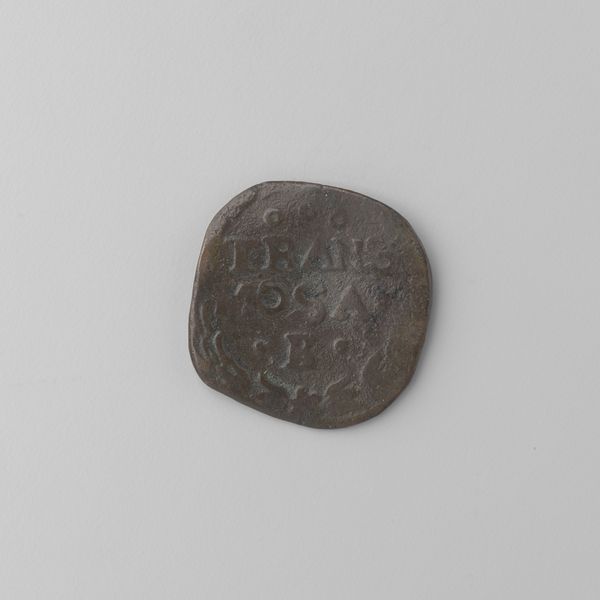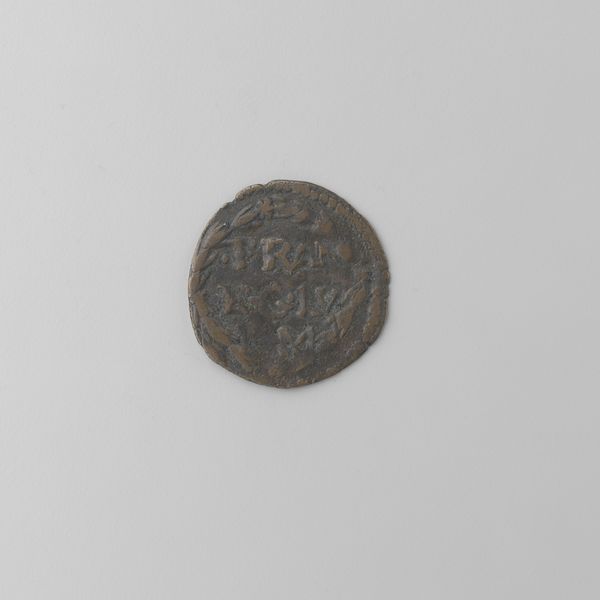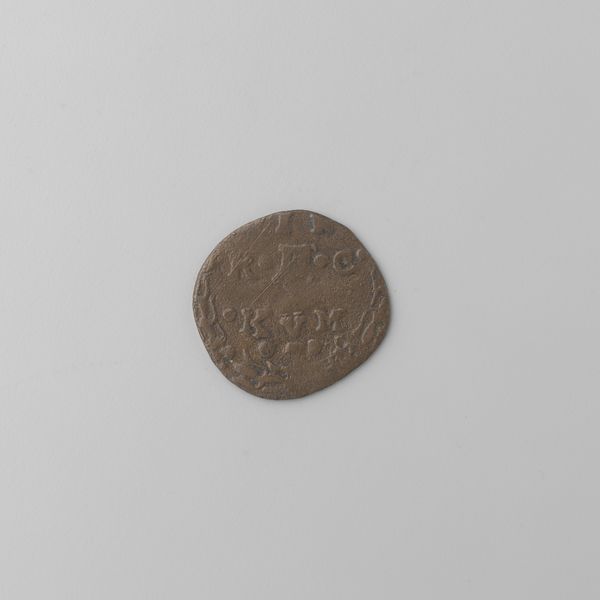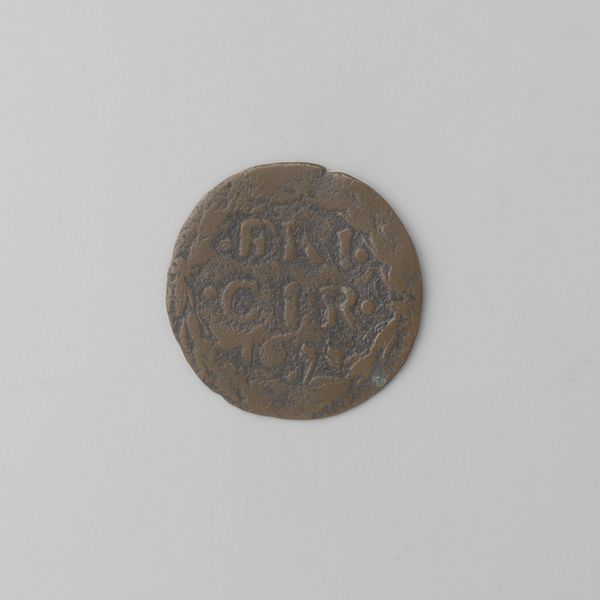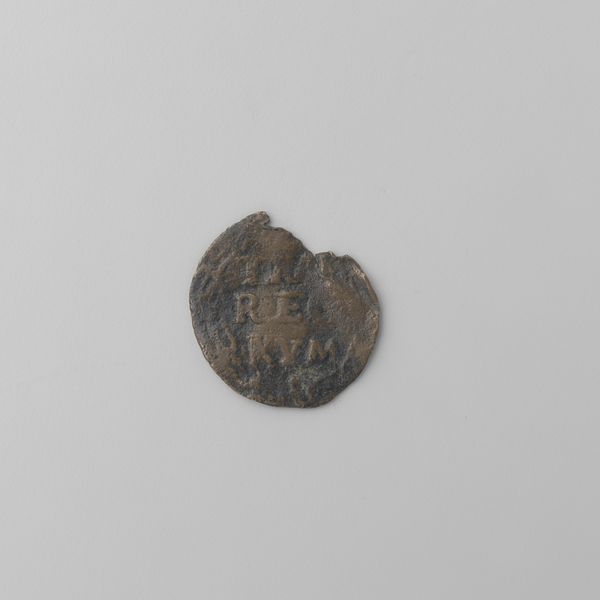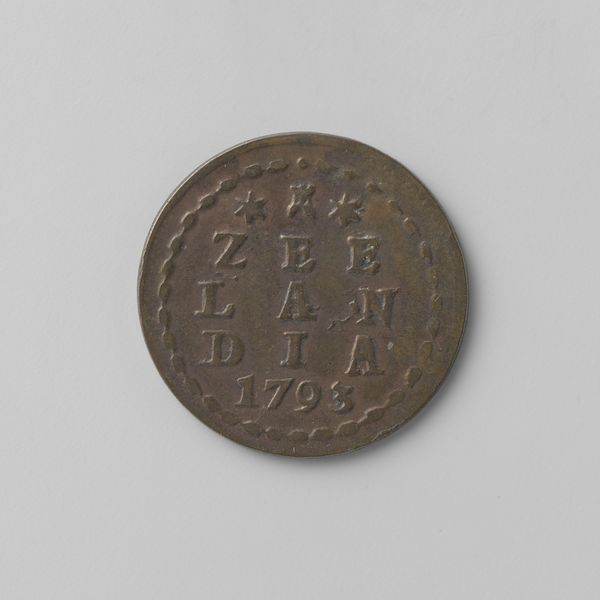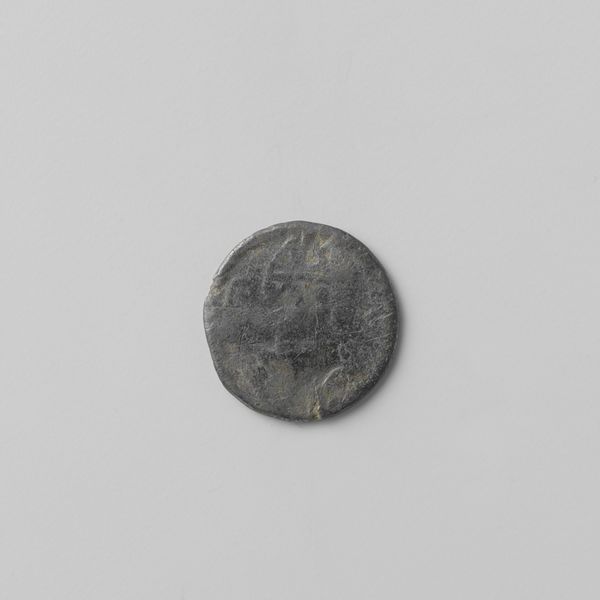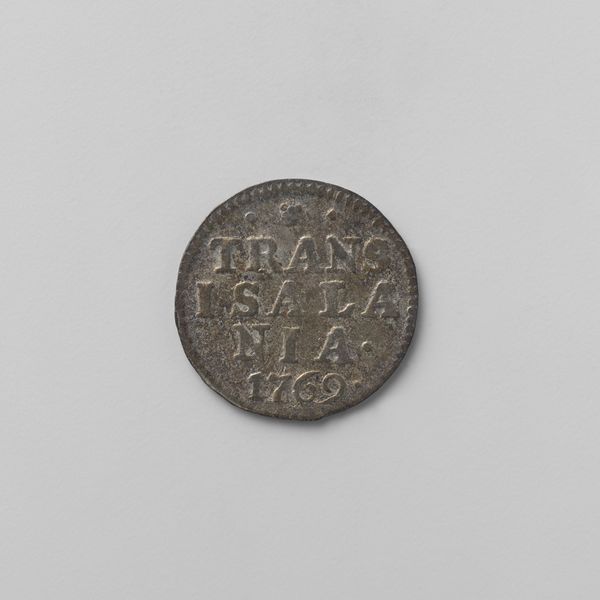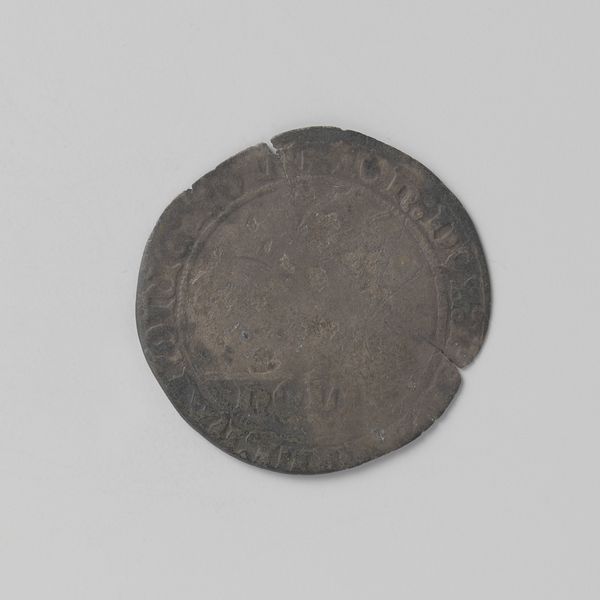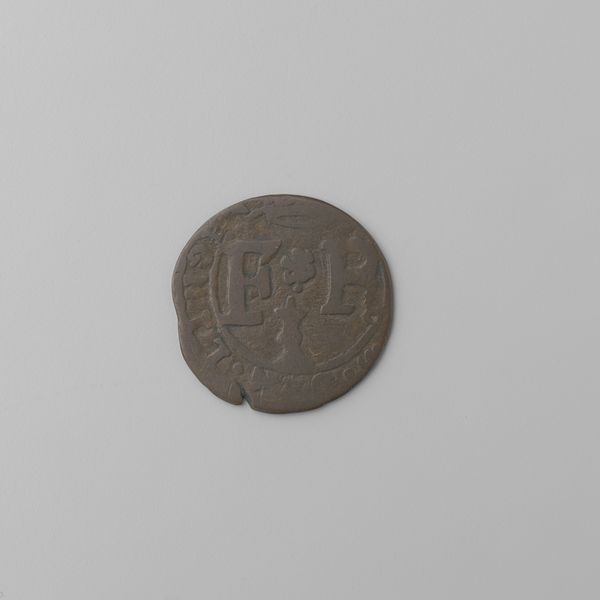
print, metal
#
portrait
#
medieval
# print
#
metal
#
islamic-art
#
history-painting
Dimensions: diameter 2.1 cm, weight 1.30 gr
Copyright: Rijks Museum: Open Domain
Curator: Well, hello there. Look at this fascinating little thing, a "Duit van Anna van der Marck, abdis van Thorn" – that’s a Dutch coin, a "duit," dating back to the period of 1604 to 1631. Minted under the reign of Anna van der Marck, who was the abbess of Thorn Abbey. Quite a mouthful, eh? Editor: My goodness, it's seen better days! It's wonderfully worn, I must say, as it makes one imagine all the grubby hands and leather pouches it has passed through over the centuries. Its edges are far from geometrically sound—an ovoid perhaps—which speaks volumes of its materiality. Curator: Exactly! The irregularities are perfect. Struck in metal—probably copper or bronze—this coin wasn't meant to be pretty. It was just a humble workhorse of an economy, a small denomination. You can barely make out the lettering, can you? "I.M. THORN" perhaps? And a date, nearly smoothed away by time itself. Editor: The epigraphy is indeed suggestive rather than definitive. The degradation, however, does present us with a veritable palimpsest—each imperfection narrating use, abuse, trade, and value across socio-economic spheres long dissolved into the currents of time. I wonder, does the abbey possess other currency from that period? Curator: Certainly. Coinage held power. Anna van der Marck wasn’t just any abbess; she was a ruler in her own right. Thorn Abbey was a tiny, independent principality, a relic from the medieval world, and she, as its head, had the right to mint her own coins. Can you imagine that, in the 17th century? Talk about power dressing. Editor: Power is the proper word—to imprint one's claim through material form upon the matrix of capital. And what might seem visually unremarkable at first is in truth the crystallization of legal authority, economic influence, and perhaps a little egoism into metal. It prompts me to consider how such small, discrete symbols aggregate power. Curator: I agree. It's also rather intimate, isn’t it? That such a humble piece can still speak volumes of personal choices in tumultuous times, of survival strategies both macro and micro, of individual leadership amidst larger shifts. It resonates! Editor: Well said! Perhaps even in its minute way, it allows one to trace history almost by touch. Thank you for the chat. Curator: My pleasure. Cheerio.
Comments
No comments
Be the first to comment and join the conversation on the ultimate creative platform.
